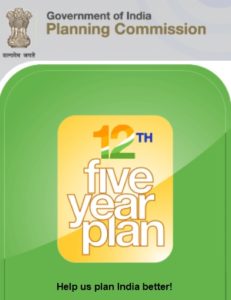The Planning Commission had constituted a working group under the Chairmanship of Dr. E. Sreedharan, MD/DMRC to make recommendations on urban transport for the 12th FYP.
10 goals have been identified for the 12th FYP, as follows:
1. To create an effective institutional and Implementation framework that will manage the huge investments envisaged (average of about Rs 1 lac Crores per year) in the urban transport sector – today there is no single agency in the State or the city to manage the multi-component urban transport sector in an integrated and coordinated fashion;
2. To build capacity of State and city officials and other stakeholders including civil society and media –today hardly any state or city has an urban transport professional on its rolls;
3. To create facilities for walking and cycling in all 2 lac+ cities and State capitals – these are non-polluting modes that do not use fossil fuels and provide social equity;
4. To develop an upgraded cycle rickshaw as an integral part of the city wide public transport network to provide the last mile connectivity – this is a non-polluting mode that does not use fuel and provides employment;
5. To augment public transport (population figures as per 2011 Census):
- Introduce organized city Bus service as per Urban bus specifications issued by MOUD in all 2 lac+ cities and State capitals;
- Add BRTS @ 20 km/1 Million population in 51 cities with population> 1 Million;\
- Add rail transit at 10 km/ Million. population, start planning rail transit projects in Cities with population in excess of 2 Million, start construction in cities with population in excess of 3 Million. The estimated financial progress during the 12thplan period is envisaged at 25% of total cost;
- Expand rail transit In existing mega cities, @ 10 km per/yr. i.e 50 km/yr in 12th FYP;
- Provide Suburban rail services in urban agglomerations with population > 4 Million;.
- Improve and upgrade Intermediate public transport vehicles.
6. To improve accessibility and mobility in cities through:
- Developing hierarchical road network in newly developing areas
- To complete 25% of major road network in all 2 lac* + cities with missing links including opening up of dead end roads for better utilization.
- To improve and maintain road surface to the highest standards with good drainage. To regulate and coordinate Work of utility agencies. Today utility agencies do not hesitate in cutting up the road for their work as and when they like and leave it unrepaired or badly repaired.
7. To provide grade separated entries and bye-passes for through traffic;
8. To improve road Safety and security against vandalism, crime and terrorism – introduce a system of safety audit;
9. To use technology for multimodal integration, enforcement and traffic management;
10. To promote innovation, research and development in guided transport; and to support pilot projects with 100% funding from Government of India.
Download the Report /input of the Working Group on Urban Transport (2.5 mb, pdf)
